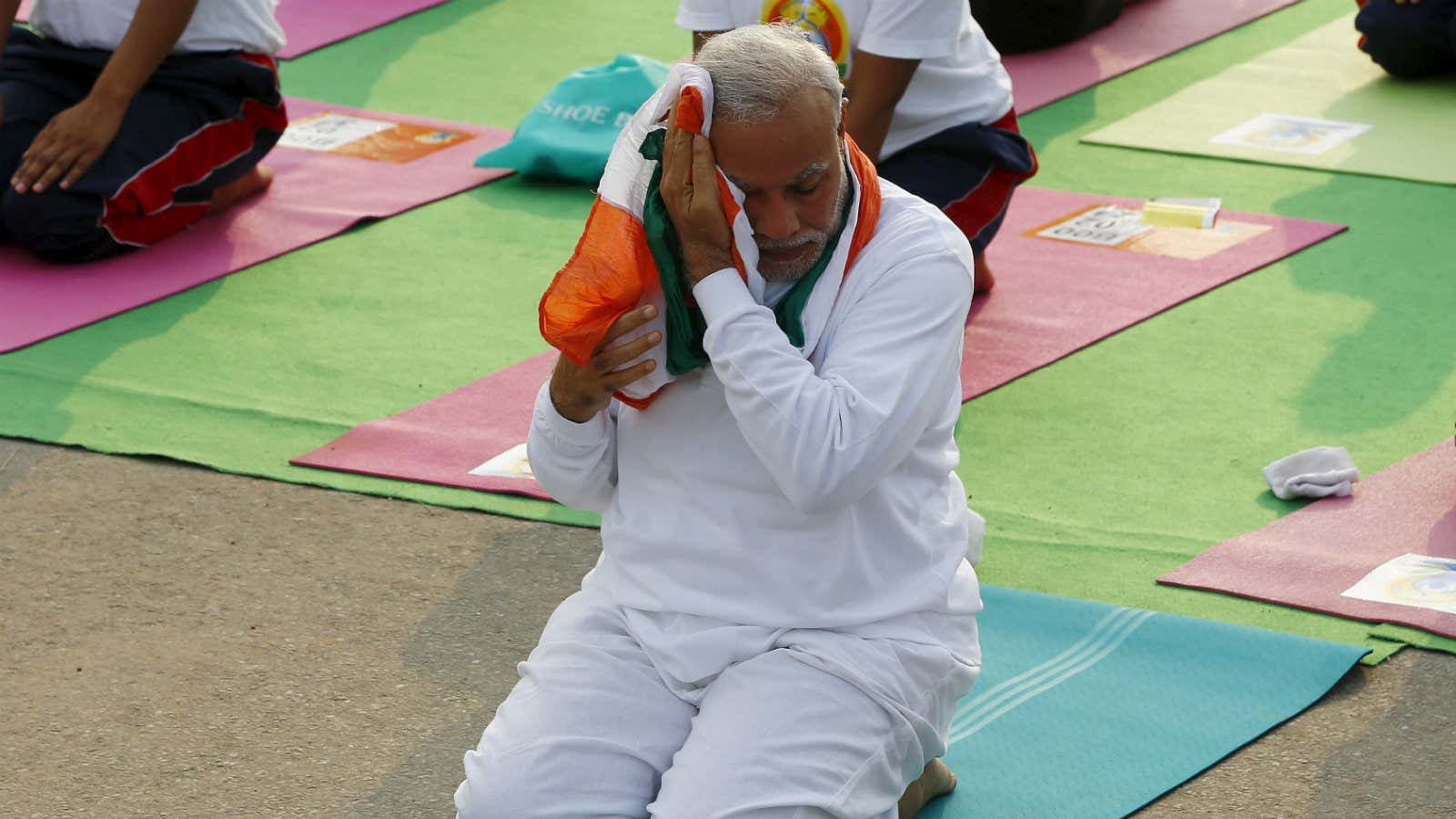Among prime minister Narendra Modi’s biggest challenges after he took charge in May last year was to find a way to quickly reign in India’s widening fiscal deficit.
The new government announced an ambitious disinvestment plan, under which it would look to sell minority stakes in state-owned companies to help plug the hole. But, of the Rs63,425 crore ($9.5 billion) targeted for sale in the last financial year, the government only made Rs31,350 crore ($4.6 billion), less than half of what it wanted.
This financial year the disinvestment target is even larger at Rs69,500 crore ($10.4 billion).
In the four-and-a-half months of the current fiscal year, the government has raked in Rs12,563.4 crore ($1.88 billion) from four share sales. The vast majority of this revenue—around Rs9,300 crore ($1.4 billion)—was earned on Monday (Aug. 24) when the government sold 10% in Indian Oil Corporation (IOC). This was the biggest planned sale for the year.
Now, the Modi government’s already-ambitious targets are looking even more daunting.
That’s because some worry the Chinese markets crash that has shaken bourses worldwide could be the beginning of a new global financial crisis. On Monday, all major global equity indices tanked, including India’s benchmark, Sensex, which fell 1,625 points—its biggest single day fall ever in absolute terms.
Most markets in Asia (outside of China, that is) recovered slightly on Tuesday, but the Sensex has continued to slide, indicating there may be more pain for investors in India.
And although the IOC sale issue was fully subscribed, investments came from institutional investors rather than retail investors, which means that the people India desperately needs to attract to the stock markets are staying away. Additionally, there were reports that the Life Insurance Corporation of India (LIC)—a government-owned insurance firm—picked up a substantial stake.
LIC’s purchase would mean that one government entity has bought a stake in another—a rescue strategy that has been questioned before.
If the turmoil in the market continues, future share sales would face similar issues, especially if the government is offering new shares at a higher price than they are already trading on the bourses.
“We have to rethink our strategy. Basically, we have to look at which are the stocks we need to put on the market and where the appetite in the market lies,” disinvestment secretary Aradhana Johri told the Mint newspaper on Monday.
Finance minister Arun Jaitley, however, said that the market movements were reactions to external events, and there was no internal cause for these shocks. ”I have not the least doubt that this turbulence is transient and temporary in nature. The markets will settle down,” he said on Monday.
Here’s India’s disinvestment for the last few years.
Currently in the works are stake sales in companies including Coal India, NTPC, Bharat Electronics, Engineers India, National Aluminium Co and Hindustan Copper, among others. Together, these need to raise over Rs56,000 crore ($8.3 billion) for the government to meet its target this fiscal year.
Clearly, what Modi now needs is a recovery in the equity markets worldwide—and some luck.
